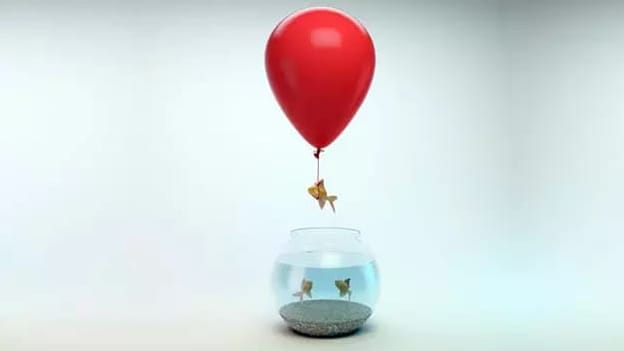An actionable blueprint for talent transformation: Manulife's future-ready approach

For several years now, global insurance firm Manulife has been on a change journey committed to innovation. Last year, this culminated in a global rollout of its new talent transformation model. Headquartered in Toronto, Canada, Manulife employs more than 37,000 employees who serve over 30 million customers worldwide, and all of them stand to benefit.
At People Matters TechHR SEA 2021, Suzie Custerson, Head of Global Leadership Development at Manulife, shared the talent transformation blueprint used for this journey, and how it complements the broader business strategy.
A human-centric transformation
The objective of the programme was to build Manulife into the world’s leading digital, customer-centric organisation. This involved, first and foremost, developing future-ready talent. Manulife has invested more than US$700 million in new technology and digital capabilities to date, but while the investment has proven to be a key differentiator in establishing the firm’s market lead, having the talent to leverage the technology is equally critical.
“Future-ready means: how do we leverage technology in a way that's not going to replace human interaction, but add more value for our customers?” Custerson said.
“How do we ensure we have the right people to help our customers make the right decisions—people with the right kind of empathy, the right kinds of understanding and creativity to be able to look around corners and see what's coming next?”
As the person in charge of developing a robust leadership pipeline, she described her role as being very much about ensuring that the business has the right talent, at the right time, at every level. And this, to a large extent, involves identifying talent that has both the hard and soft skills needed.
Taking a data-driven approach
Soft skills are typically considered difficult to identify and assess, often requiring a great deal of subjective human judgement. For a more objective and data-driven approach, Manulife partnered with pymetrics to develop and implement its programme in the APAC region. pymetrics uses a data-driven approach to bring soft skills to life, and the data has been pivotal in solving business challenges such as how to assess and identify talent, or how to engage employees. Importantly, pymetrics does not replace humans, but rather enables them to be more efficient, to interact better with each other, and to feel more connected to the organisation.
“For us, it was really about who has proven experience that's scientific and backed by data, and how we can work together with that partner to firstly ensure that pilots are successful, and secondly do a fast follow to scale those programs to other parts of our business,” Custerson said.
Finding the right priorities
Custerson and her team identified three key areas where the return on investment absolutely had to be measured: gaining the insights to make better hiring decisions, growing internal and external talent, and improving overall efficiency. In all three areas, the programme delivered success.
For example, growing talent was very much a matter of giving people the resources to learn and develop, she said: “One of our other strategic priorities is to build a high performing team, and a high performing team for us today means really empowering people to become continuous learners."
"We need people who are ready to take on challenges, people who are ready to adopt new technologies, people who are willing to challenge some of the previous assumptions they had, and that means having greater self-awareness.”
The gamified assessments used by pymetrics have been extremely beneficial in this, she said, recounting anecdotes of how participants called the process “fun” and “interesting”. Not only was the experience pleasant, pymetrics automatically generates an in-depth report to every employee who completes the games. This gives them insight into their strengths, possible areas to develop, and overall better understanding of their leadership practice”.
At the same time, the new programmes were actually able to cut out a number of unpopular administrative steps in the hiring process, creating a smoother and more enjoyable experience for candidates.
Change management and the communication strategy
Change management is one of the greatest challenges in implementing an extensive talent transformation strategy, but with careful communication and messaging, it's possible to create an employee narrative that people will enthusiastically buy into, Custerson said. When employees have their strengths and weaknesses identified, for example, these can be used as base points on which to build their career advancement.
“It's about holding up the value of 'what's in it for me' for employees to see,” she explained. “We also need to share with them the reasons why we are doing this, what we are doing with the data we're collecting, to address their concerns and guide the narrative towards how it benefits them.”
She listed a few examples of what goes into the narrative: ensuring that the programme is about helping people grow, angling it to help them to focus their development efforts on the skills that will definitely be required of leaders in the future, helping people get much better insights into themselves through data. Transparency is also critical, as is a clear model of competencies that people can reference to understand what is required for them to advance further in the organisation.
The next step: scaling up to other areas
Now that the talent transformation plan has yielded such successful results, the next step for Manulife is to take the insights and scale them into other business areas. For Custerson, one of the areas of focus will be a stepped-up executive leadership program that more intensively identifies top talent for potential critical roles in the future, and arms them with the critical skills and behaviours that will be expected of leaders moving forward.
“People sometimes ask me: 'Why are you so passionate about working at Manulife?” And I say 'Well, I effectively get paid to learn',” Custerson quips.






